Every era has its coolest baseball card sets. Sometimes the cards are very innovative for their era and other times the design just makes for a real solid card set. Of course, the list could go on forever and include classics like the T206 or 1952 Topps but completing sets of those cards is beyond the reach of most average collectors. Thus, here are some of our choices from across the generations of collecting and including cards from sets you could reasonably hope to work toward completion. Click the links within the story to see them on eBay.
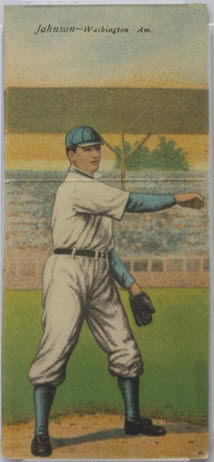
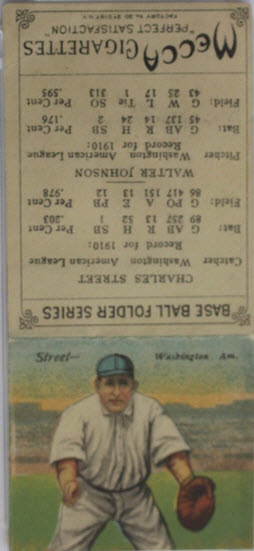 An early example is the 1911 Mecca Double Folders (T201). This set brings you two players on one card and you could switch the player’s face by just folding the card over so the other player makes his appearance. Meanwhile the reverse features stats for each of the players. But the whole concept of two players on one card would become a fairly common theme and Topps would use it in their 1955 Doubleheader set. Since then a few other sets have also featured the fold over method but more than 100 years ago it was unique and these cards offer a wonderful feel for baseball as it was more than a century ago.
An early example is the 1911 Mecca Double Folders (T201). This set brings you two players on one card and you could switch the player’s face by just folding the card over so the other player makes his appearance. Meanwhile the reverse features stats for each of the players. But the whole concept of two players on one card would become a fairly common theme and Topps would use it in their 1955 Doubleheader set. Since then a few other sets have also featured the fold over method but more than 100 years ago it was unique and these cards offer a wonderful feel for baseball as it was more than a century ago.
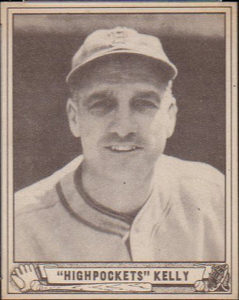 The 1940 Play Ball set features black and white photos on the front as well as a nice biography on the back. What makes this set so cool is the usage of nicknames on the front. While Topps uses the line “bring you closer to the game” for today’s cards, those nicknames were a way to become closer to the game in the era just before World War II.
The 1940 Play Ball set features black and white photos on the front as well as a nice biography on the back. What makes this set so cool is the usage of nicknames on the front. While Topps uses the line “bring you closer to the game” for today’s cards, those nicknames were a way to become closer to the game in the era just before World War II.
George “Twinkletoes” Selkirk and Travis “Stonewall” Jackson are just two examples of famous players at the time known as much for their nicknames as for their real names. Seeing those nicknames reminds me of an earlier, more innocent time in baseball. The set also includes a mix of current and all-time greats so you can also collect a card of Shoeless Joe Jackson for much less than what you’d pay for one issued during his playing career.
The 1950’s brought two sets which are still considered among the most beautiful ever created. Both the 1953 Bowman Color and Black and White sets are amazing for their use of photography on the front with no words identifying the players or their teams. All the information about the players is on the back.
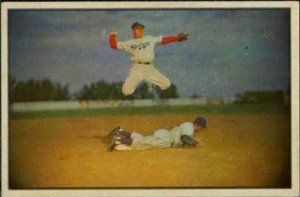 The 1953 Bowman Color Pee Wee Reese card is especially noteworthy as Bowman found an photo used in a magazine a few years earlier and used that image on the card. What makes that card so cool is the posed action shot of Reese jumping over the sliding runner. Other than a few cards in the 1962 Topps set, the concept of action photos would not really take hold for two more decades. The 1953 Bowman cards of Stan Musial, Roy Campanella and Mickey Mantle are among the most beautiful ever produced.
The 1953 Bowman Color Pee Wee Reese card is especially noteworthy as Bowman found an photo used in a magazine a few years earlier and used that image on the card. What makes that card so cool is the posed action shot of Reese jumping over the sliding runner. Other than a few cards in the 1962 Topps set, the concept of action photos would not really take hold for two more decades. The 1953 Bowman cards of Stan Musial, Roy Campanella and Mickey Mantle are among the most beautiful ever produced.
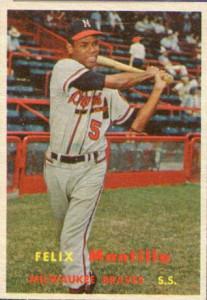 The other well regarded set was the 1957 Topps set which brought in the era of what we now call the “standard-size” of 2 1/2″ by 3 1/2′”. So many photos are really neat in that set but we’re partial to the Felix Mantilla and Don Zimmer cards. While both of these cards feature players who were not superstars, the images are excellent. Look at how all the colors work on the Mantilla card. You will probably have your favorite card from this set and frankly just about all the cards are really neat to own. The set features the famous uncorrected Hank Aaron card, which shows him as a lefty batter due to the image being reversed at printing, a terrific shot of Sandy Koufax and a beautifully lit photo of Roberto Clemente, among many others.
The other well regarded set was the 1957 Topps set which brought in the era of what we now call the “standard-size” of 2 1/2″ by 3 1/2′”. So many photos are really neat in that set but we’re partial to the Felix Mantilla and Don Zimmer cards. While both of these cards feature players who were not superstars, the images are excellent. Look at how all the colors work on the Mantilla card. You will probably have your favorite card from this set and frankly just about all the cards are really neat to own. The set features the famous uncorrected Hank Aaron card, which shows him as a lefty batter due to the image being reversed at printing, a terrific shot of Sandy Koufax and a beautifully lit photo of Roberto Clemente, among many others.
The early 1980’s were a time in which the second baseball card “war” really took shape. Once Topps lost their monopoly, two other companies quickly began producing sets with both Donruss and Topps joining the fray. Each of those companies had their bumps at their start but by the mid-1980’s both were creating reasonably attractive sets. For Fleer, the set that began their turnaround and is very underrated in collecting circles was the 1983 set. The brown bordered surrounded an excellent group of photos and really helped Fleer re-establish themselves. After the error-laden 1981 set and the frankly horrible photography which dotted the 1982 set (Jack Clark as an example), the 1983 set was a quantum leap forward.in quality for F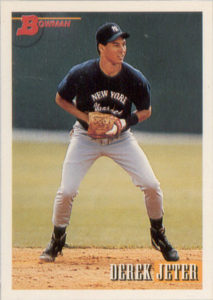 leer. It also brought us rookie cards of Tony Gwynn, Ryne Sandberg and Wade Boggs, all future Hall of Famers. It’s sort of an afterthought today, but it represented a huge step forward for Fleer, which continued producing cards into the 1990s.
leer. It also brought us rookie cards of Tony Gwynn, Ryne Sandberg and Wade Boggs, all future Hall of Famers. It’s sort of an afterthought today, but it represented a huge step forward for Fleer, which continued producing cards into the 1990s.
In many ways the 1992-94 Bowman sets were nice as they all featured clear uncluttered photos of many players destined to be tomorrow’s stars. In those three years a collector can acquire all the rookie cards of the famed Yankees ‘Core Four’ not to mention countless other stars of the future. And what makes these sets so neat is while those players made the majors there are always going to be other players in those sets who had promise but didn’t make it. Heard from Rod Lofton or Marty Ness recently? Well, neither have we. Those Bowman sets give us a great look at what the prospect 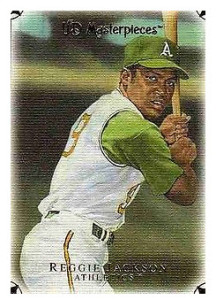 groupings were at the time.
groupings were at the time.
In more modern times, we are somewhat partial to the 2007 Upper Deck Masterpiece set. This set featured a mix of the best players of today with yesterday legends and other famous personages. Many of the art work features famous moments in baseball history such as Lou Gehrig’s famed “Luckiest Man” speech.
One important difference is the Masterpiece set has many of the more modern bells and whistles with all the different parallel versions. But looking at this set is trip back through time.
Here’s hoping the next century brings us even more of the coolest baseball card sets the hobby has ever seen.